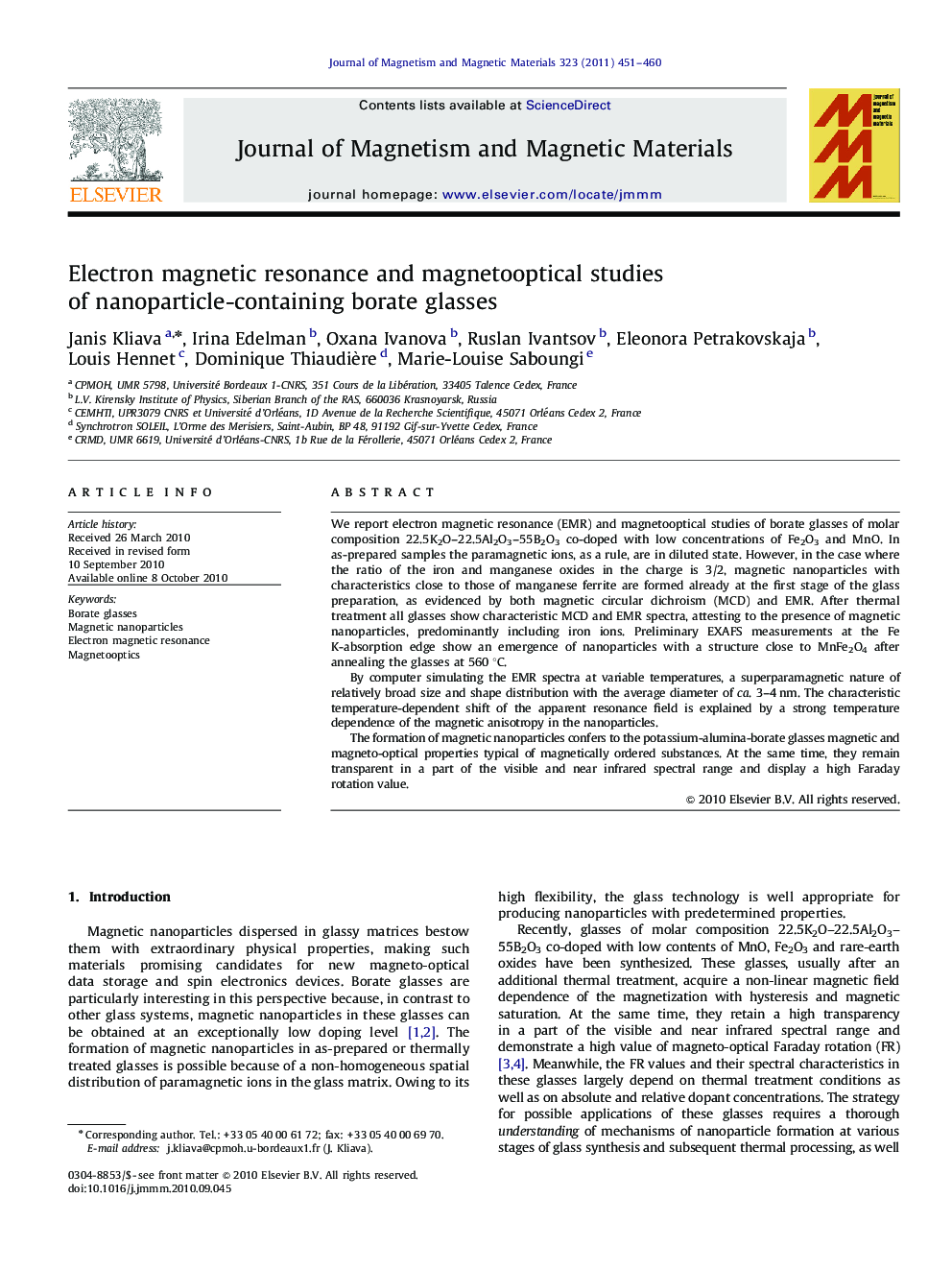| Article ID | Journal | Published Year | Pages | File Type |
|---|---|---|---|---|
| 1801032 | Journal of Magnetism and Magnetic Materials | 2011 | 10 Pages |
We report electron magnetic resonance (EMR) and magnetooptical studies of borate glasses of molar composition 22.5K2O–22.5Al2O3–55B2O3 co-doped with low concentrations of Fe2O3 and MnO. In as-prepared samples the paramagnetic ions, as a rule, are in diluted state. However, in the case where the ratio of the iron and manganese oxides in the charge is 3/2, magnetic nanoparticles with characteristics close to those of manganese ferrite are formed already at the first stage of the glass preparation, as evidenced by both magnetic circular dichroism (MCD) and EMR. After thermal treatment all glasses show characteristic MCD and EMR spectra, attesting to the presence of magnetic nanoparticles, predominantly including iron ions. Preliminary EXAFS measurements at the Fe K-absorption edge show an emergence of nanoparticles with a structure close to MnFe2O4 after annealing the glasses at 560 °C.By computer simulating the EMR spectra at variable temperatures, a superparamagnetic nature of relatively broad size and shape distribution with the average diameter of ca. 3–4 nm. The characteristic temperature-dependent shift of the apparent resonance field is explained by a strong temperature dependence of the magnetic anisotropy in the nanoparticles.The formation of magnetic nanoparticles confers to the potassium-alumina-borate glasses magnetic and magneto-optical properties typical of magnetically ordered substances. At the same time, they remain transparent in a part of the visible and near infrared spectral range and display a high Faraday rotation value.
Research Highlights►Magnetic nanoparticles are formed in borate glasses co-doped with Fe2O3 and MnO. ►The nanoparticle structure is close to that of manganese ferrite. ►The particles have large morphological distributions with mean size of 3–4 nm. ►These glasses remain transparent in a part of visible and near infrared range. ►The glasses show hysteresis in the magnetic field dependence of the Faraday Rotation.
